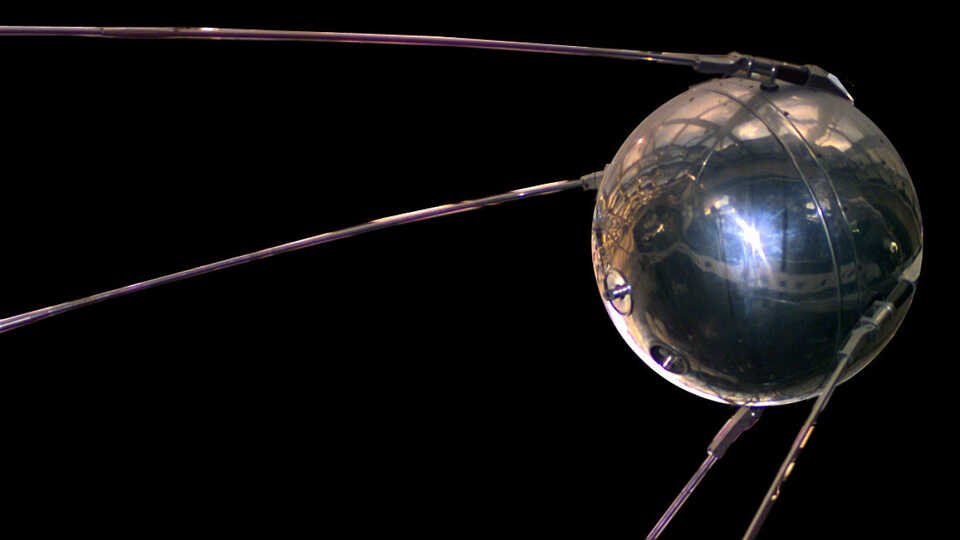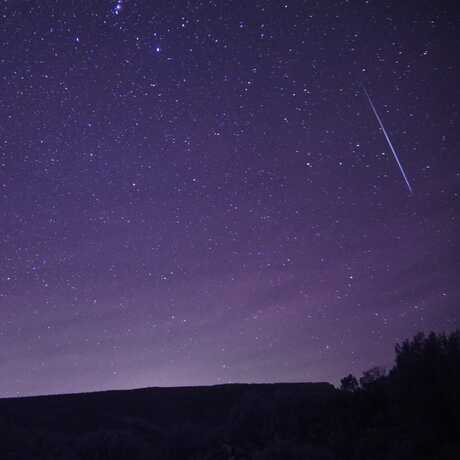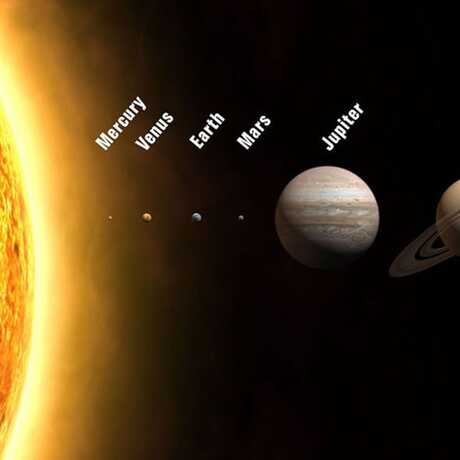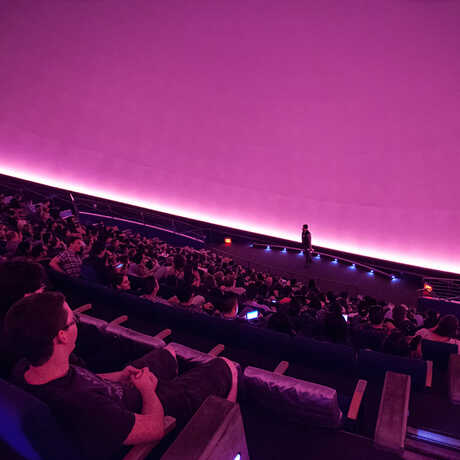
Morrison Planetarium's hub for the latest out-of-this-world news, from meteor showers to space exploration events.
Another "Great American Eclipse"

Skywatchers and eclipse-chasers have been eagerly waiting the total solar eclipse of April 8, whose shadow path runs across the eastern United States, starting from central Mexico and crossing into Texas, then heads northeastward through parts of Oklahoma, Arkansas, Missouri, Illinois, Indiana, Ohio, Pennsylvania, New York, Vermont, and Maine. Some part of the eclipse will be seen from all of the contiguous US, depending on how far from the main path observers are located, but only observers on the narrow path of the inner shadow, or umbra, will experience totality. This is when the Sun's disk is completely hidden from view and the Sun's ghostly corona is visible for several minutes.
Discover more about this eclipse at https://www.greatamericaneclipse.com/april-8-2024 and on our eclipse page. Compared to the total eclipse of 2017, this time the path of totality passes over more major cities and crosses generally more accessible territory, with the added bonus of longer totality, particularly in Mexico and Texas. With those factors on its side, April's event—weather-permitting, as always—is expected to "eclipse" 2017's event in the number of skywatchers who will be able to see it.
A forecast of spring showers

- The Lyrid meteor shower is active April 15-29 each year as Earth passes through the trail of dust left behind by Comet Thatcher. This is the oldest of the known meteor showers, with Chinese records dating back 2,700 years. It appears to radiate from the constellation Lyra the Harp, producing a peak rate of 5-20 meteors per hour during the predawn hours of April 23. However, this year's peak occurs during a nearly-full Moon whose bright light will obscure all but the brightest fireballs.
- The Eta Aquarid display, caused by Earth's passage through the dust trail of Halley's Comet, is active from April 15-May 27, with its peak occurring on the morning of May 6. This year's peak coincides with a new Moon, so viewing circumstances are favorable. However, the location of the shower's radiant point in Aquarius the Water-Carrier places it low in the south for observers in the northern hemisphere, who might see 10-30 meteors per hour. In the southern hemisphere, where the radiant is higher in the sky, around 30-50 meteors per hour will be seen.
- How to Observe a Meteor Shower: https://www.calacademy.org/explore-science/how-to-observe-a-meteor-shower
Status of the "devil comet"

Periodic Comet 12P/Pons-Brooks (12P for short), discovered in 1812 and having an orbital period of 71 years, makes its closest approach to the Sun on April 21, when comets usually put on their best displays. Known as a cryovolcanic comet, 12P experienced increases in internal pressure as it approached the Sun and was exposed to more heat, causing explosive outbursts that altered the shape of its coma (the cloud of gas that gradually develops around the nucleus as it warms). Surface topography redirected the outflowing gas into a bifurcated shape that suggested "devil horns" to some observers, hence the sinister-sounding nickname (to others, it looked more like the Millennium Falcon spaceship from "Star Wars," but to each their own). As time passed, the comet has developed quite a lovely, classic-looking tail that's best appreciated in long-exposure astrophotos, such as this one at apod.nasa.gov/apod/ap240216.html.
Comet brightness is notoriously difficult to predict accurately, and current best estimates are that to ground-based observers, 12P will most likely require binoculars to be seen—not to mention a dark viewing site, clear skies, and a knowledge of its precise position against the stars. Finder charts can be found at theskylive.com/12p-info.
Photo credit: Gianluca Massi/Virtual Telescope Project
Goodbye, Orion…hello Scorpius

Late April is about the last time we can see the stars of Orion the Hunter, when it's located low in the west just after sunset. By midnight, with Orion fully below the horizon, the stars of Scorpius the Scorpion rise in the southeast, highlighted by the prominent, reddish star Antares.
This placement on opposite sides of the sky reflects an ancient Greek myth about how Orion was so boastful of his hunting skills, he bragged that he could slay every animal on Earth if he wished. This didn't sit well with Gaia, the Earth-goddess and protector of animals (in other versions, the offended party is Artemis, goddess of the hunt), and she sent a lowly scorpion to sting him as punishment for his arrogance. The two were placed on opposite sides of the heavens as a lesson in humility: When Scorpius rises, Orion flees and returns only after the Scorpion has set and the coast is clear (...'fraidy cat!).
Photo credit: Stellarium
The day the Sun stands still

The tilt of Earth's axis of rotation is what causes the seasons, and among the observable results of this are the changing height of the Sun's apparent path across the sky and where that path intersects the horizon at sunrise and sunset.
June 20 is the summer solstice for the northern hemisphere, when the Sun's rising and setting points—which slowly move back and forth from north to south along the horizon during the year—reach their northernmost limit. On this day, the northward-moving Sun seems to "stand still" (hence, the term solstice, from the Latin "sol" and "sistere," which together mean "Sun stationary" or "Sun standing still"). Then, its motion along the horizon reverses and creeps southward during the next six months. Likewise, the height of the Sun's arc across the sky sinks southward, taking with it the elevation of the Sun at noon. On the December solstice, this southward motion stops and reverses again, ping-ponging back and forth every year.
Download Morrison Planetarium's 2024 Pocket Almanac to stay up-to-date on eclipses, meteor showers, satellite spottings, and more.

The Benjamin Dean lecture series brings the world's leading experts in astronomy, astrophysics, and more to the Academy's Morrison Planetarium.


